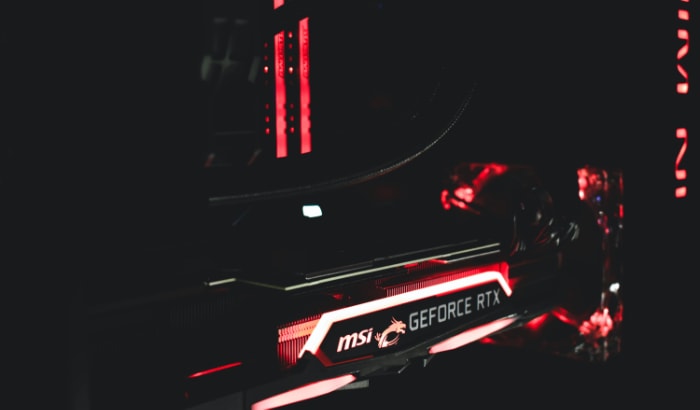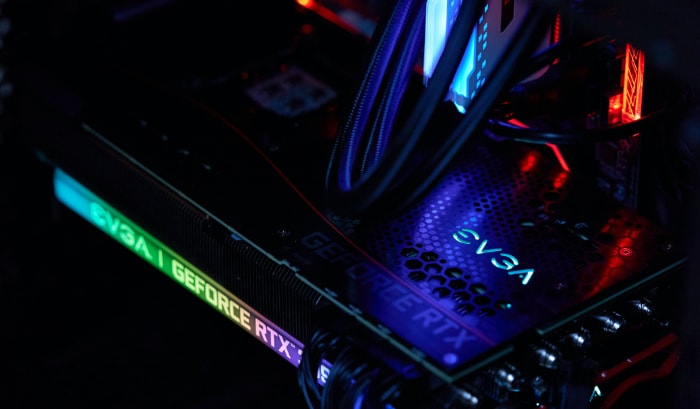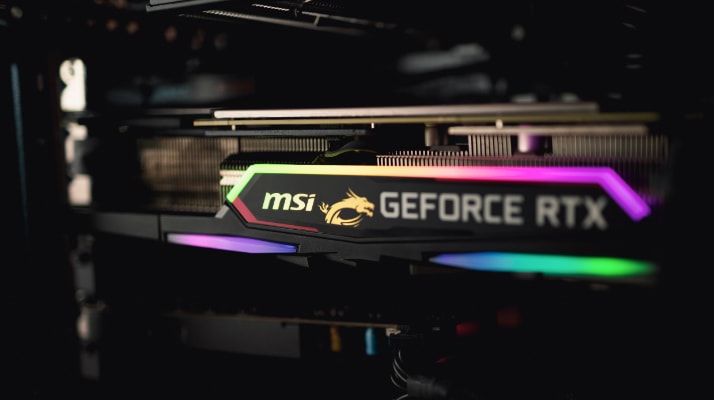GPU Artifacting: Causes and Solutions

As a PC enthusiast or a gamer, you may have come across graphical glitches or strange visual artifacts on your screen from time to time. These issues can be frustrating, distracting, and even detrimental to your overall gaming or computing experience.
GPU artifacting is a common problem that arises due to various factors, and addressing it promptly is crucial to ensure smooth performance and a longer lifespan for your graphics card.
This comprehensive guide aims to provide you with a thorough understanding of GPU artifacting, its causes, and effective solutions to help you diagnose and fix the issue.
Understanding GPU Artifacting: Causes and Consequences
GPU artifacting refers to the occurrence of visual anomalies, glitches, or distortions on your computer screen that stem from issues with the graphics processing unit (GPU).
These artifacts can manifest in various forms, such as flickering, pixelated images, random shapes or lines, incorrect colors, or even screen tearing. In some cases, artifacting may also lead to crashes or freezing, which can significantly disrupt your gaming or computing experience.
Common Causes of GPU Artifacting
In this section, we will discuss the most common causes of GPU artifacting.
Overheating
One of the primary reasons behind GPU artifacting is overheating. The GPU generates heat as it processes and renders graphics-intensive tasks. If the temperature exceeds the GPU’s safe operating range, it may result in artifacts or even permanent damage to the card.
Inadequate cooling, dust buildup, or degraded thermal paste can contribute to overheating.
Overclocking
Overclocking involves increasing the clock speeds of the GPU beyond its default settings to achieve better performance. However, pushing the GPU beyond its limits can cause instability and result in artifacting. This is often due to the GPU drawing more power and generating more heat than it was designed to handle.
Driver Issues
Outdated or incompatible GPU drivers can also lead to artifacting. Drivers are the software that allows your GPU to communicate with the operating system and other hardware components. If the drivers are not functioning correctly, it may cause visual glitches or artifacts on your screen.
Hardware Failure
GPU artifacting can also be a sign of impending hardware failure. Prolonged overheating, manufacturing defects, or physical damage to the GPU or its components can cause the card to malfunction and produce artifacts.
Insufficient Power Supply
A graphics card requires a specific amount of power to function optimally. If your power supply unit (PSU) is unable to deliver the required power, the GPU may not operate correctly, resulting in artifacting or other performance issues.
Diagnosing GPU Artifacting: Identifying Symptoms and Using Diagnostic Tools
Before attempting to fix GPU artifacting, it is essential to identify the symptoms and confirm that the issue is indeed related to the graphics card. Common symptoms of GPU artifacting include:
- Flickering or flashing images
- Pixelated or distorted graphics
- Random shapes or lines appearing on the screen
- Incorrect colors or textures
- Screen tearing or stuttering
These symptoms may occur intermittently or persistently, depending on the severity of the issue. It is crucial to take note of the specific symptoms you are experiencing, as this information can help pinpoint the cause of the artifacting.
Using Diagnostic Tools and Software
To further investigate GPU artifacting, you can use various diagnostic tools and software to monitor your GPU’s performance and identify any anomalies. Some popular diagnostic tools include:
GPU-Z: A lightweight utility that provides detailed information about your graphics card, such as clock speeds, temperatures, and voltages. It can help you monitor your GPU’s performance in real-time and identify potential issues.
FurMark: A GPU stress test and benchmarking tool that pushes your graphics card to its limits by rendering complex 3D scenes. Running FurMark can help you determine if the artifacting is caused by overheating, overclocking, or hardware issues.
MSI Afterburner: A popular overclocking utility that also features comprehensive monitoring tools. You can use MSI Afterburner to observe your GPU’s temperatures, clock speeds, and power consumption, which can help diagnose artifacting issues.
Isolating the Issue
Once you have gathered information about your GPU’s performance and symptoms, the next step is to isolate the issue to determine if it is indeed related to the graphics card. Some techniques to isolate the issue include:
Testing the display: Connect your computer to a different monitor or use a different cable to ensure the artifacting is not caused by a faulty display or connection.
Running in Safe Mode: Boot your computer in Safe Mode to disable non-essential software and drivers. If the artifacting persists, it is more likely to be a hardware-related issue.
Checking other components: Inspect other components in your PC, such as the motherboard, RAM, and PSU, to rule out any possible issues with these parts.
Fixing GPU Artifacting: Solutions for Common Causes

Now that we have identified the typical causes of GPU artifacting, we will explore various solutions to address each of them. By following these targeted fixes, you can tackle the root cause of the issue and restore your GPU’s performance.
Cleaning the GPU and its Cooling System
Dust and debris buildup can hinder the GPU’s cooling system, leading to higher temperatures and potential artifacting. Regularly clean the GPU’s heatsink, fans, and air vents using compressed air or a soft brush to maintain optimal airflow and cooling efficiency.
Improving Airflow and Cooling in the PC Case
Ensuring proper airflow and cooling within your PC case is vital for maintaining a stable GPU temperature. Position fans strategically to create a balanced airflow, intake cool air from the front and bottom, and exhaust warm air from the rear and top. Consider adding more fans or upgrading to a larger case if necessary.
Reapplying Thermal Paste
Over time, the thermal paste between the GPU die and heatsink may degrade, reducing its ability to transfer heat effectively. Remove the old thermal paste using isopropyl alcohol and apply a fresh, high-quality thermal paste to improve heat transfer and lower temperatures.
Monitoring and Controlling GPU Temperature
Utilize monitoring software like GPU-Z or MSI Afterburner to keep an eye on your GPU’s temperature during regular use and gaming sessions. Set custom fan curves to increase the cooling fan speed when temperatures rise, ensuring efficient cooling and preventing overheating.
Restoring Default GPU Settings
If you suspect that overclocking is causing artifacting, restore the GPU to its default settings using overclocking software or the GPU’s control panel. This will return the clock speeds to their original values, potentially resolving instability and artifacting.
Gradually Adjusting Clock Speeds
If you wish to continue overclocking, adjust the clock speeds in small increments and test the stability of your GPU using benchmarking software or stress tests like FurMark. Gradual adjustments can help you find the sweet spot between performance gains and stability.
Ensuring Stability with Stress Tests
After making any adjustments to the GPU’s clock speeds, run stress tests and monitor the GPU’s temperature and performance to ensure stability. If artifacting occurs during stress tests, consider lowering the clock speeds or adjusting the power limits.
Installing the Latest Drivers
Outdated or incompatible drivers may cause artifacting. Visit the GPU manufacturer’s website and download the latest drivers for your specific graphics card model. Install the drivers and restart your computer to ensure they are functioning correctly.
Reverting to Previous Stable Drivers
If the latest drivers are causing artifacting, consider rolling back to a previous, stable driver version. Uninstall the current drivers, download and install the older version from the manufacturer’s website, and restart your computer.
Using Manufacturer Recommended Drivers
Some GPU manufacturers provide recommended driver versions optimized for specific games or applications. Check for these recommendations and install the appropriate drivers to improve compatibility and performance.
Re-seating the GPU
Loose connections or improper seating of the GPU may cause artifacting. Power down your computer, remove the GPU from its slot, and carefully re-insert it, ensuring it is firmly seated and secure.
Testing the GPU in a Different System
To rule out other hardware issues, test your GPU in a different computer. If the artifacting persists, it is more likely to be a problem with the GPU itself.
Inspecting for Physical Damage
Visually inspect the GPU for any signs of physical damage, such as burnt components, broken traces, or damaged capacitors. If you discover any damage, consider seeking professional help or replacing the GPU.
Replacing Faulty Components
In some cases, it may be possible to replace specific faulty components on the GPU, such as fans, capacitors, or power connectors. Consult your GPU’s documentation or contact the manufacturer for guidance on replacing these parts.
However, keep in mind that component-level repairs may require professional assistance or specialized tools and may not always be feasible or cost-effective.
Calculating Power Requirements
To ensure your PSU can deliver adequate power to your GPU, calculate the power requirements of your entire system using an online power supply calculator or by referring to the manufacturer’s specifications.
Make sure to account for all components, such as the CPU, RAM, storage devices, and any additional peripherals.
Upgrading the Power Supply Unit (PSU)
If your current PSU is insufficient for your system’s power requirements, consider upgrading to a higher wattage, high-quality PSU from a reputable manufacturer. A quality PSU not only ensures stable power delivery to your GPU and other components but also offers better efficiency, reliability, and longevity.
Prevention and Maintenance: Tips for a Healthy GPU

Preventing GPU artifacting and ensuring the longevity of your graphics card are key to an enjoyable computing and gaming experience. In this section, we will provide you with essential tips and best practices for maintaining your GPU’s health and preventing future artifacting occurrences.
Regularly Cleaning the GPU and PC Case
Regular maintenance is essential for keeping your GPU in top condition and preventing issues like artifacting. Make it a habit to clean the GPU’s heatsink, fans, and air vents, as well as the PC case, every few months to ensure optimal airflow and cooling efficiency. Use compressed air or a soft brush to remove dust and debris carefully.
Keeping the GPU Drivers Up-to-Date
Stay informed about new driver releases and updates from your GPU manufacturer. Regularly updating your GPU drivers ensures compatibility, stability, and optimal performance with the latest games and applications.
However, it’s crucial to monitor your GPU’s performance after updating, as new drivers can sometimes introduce issues. If needed, roll back to a previous stable version.
Monitoring GPU Temperatures and Usage
Utilize monitoring software like GPU-Z or MSI Afterburner to keep an eye on your GPU’s temperature and usage during regular use and gaming sessions. This can help you identify potential overheating issues or other problems before they escalate and cause artifacting or permanent damage.
Avoiding Excessive Overclocking
While overclocking can provide a performance boost, pushing your GPU beyond its designed limits can cause instability, overheating, and artifacting. If you choose to overclock, do so cautiously and in small increments, testing the GPU’s stability and temperature after each adjustment.
Remember that excessive overclocking can shorten your GPU’s lifespan and potentially void its warranty.
Investing in a Quality PSU
A high-quality power supply unit (PSU) is an essential investment for any PC build, ensuring stable power delivery to your GPU and other components. Choose a PSU from a reputable manufacturer with a wattage rating suitable for your system’s requirements.
A quality PSU not only helps prevent artifacting and other performance issues but also contributes to the overall efficiency, reliability, and longevity of your entire system.
Conclusion
GPU artifacting can be a frustrating and disruptive issue that affects your gaming and computing experience. However, by understanding the root causes, employing diagnostic tools, and applying the appropriate fixes, you can successfully address and resolve these visual anomalies.
Moreover, implementing preventative measures and regular maintenance can help you maintain your GPU’s health, prevent future artifacting occurrences, and prolong its lifespan.
This comprehensive guide has provided you with valuable insights into the world of GPU artifacting, its causes, diagnostic methods, and effective solutions. By staying informed, monitoring your GPU’s performance, and practicing responsible maintenance, you can enjoy a seamless visual experience and keep your GPU running in top shape for years to come.


